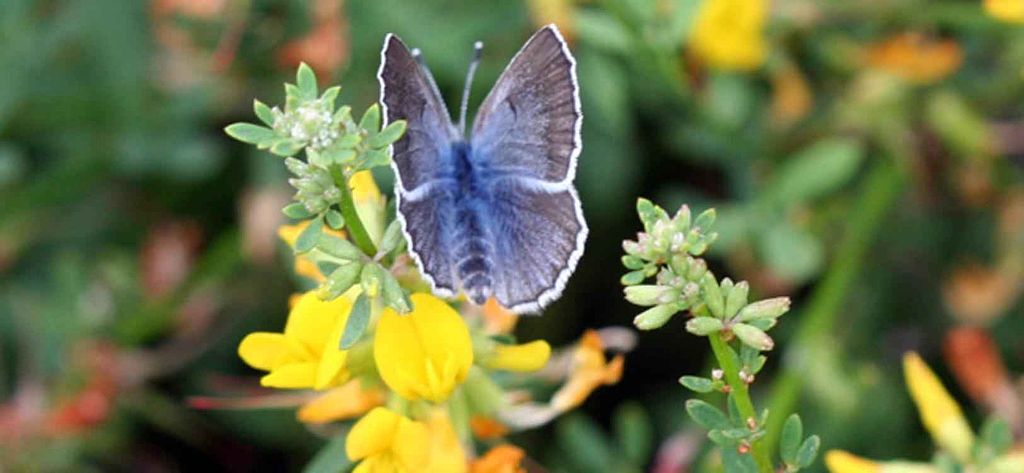Government Grants
Business Grants
Home Owner Programs
Federal Programs
About Us
Migratory Bird Conservation in the Upper Midwest
This announcement solicits proposals for the U. S. Fish and Wildlife Service�s (USFWS�s) Upper Midwest Migratory Bird Conservation Program.
In 2012, this program will provide small grants for the conservation of birds that are protected under the Migratory Bird Treaty Act but not Federally
listed as Endangered or Threatened.
Proposals should address the geographic area that includes Illinois, Indiana, Iowa, Michigan, Minnesota, Missouri, Ohio, and Wisconsin; or non-breeding season areas important for birds breeding in these states; or broad-scale actions that will have tangible benefits that include birds in these states.
This grant program is listed in the Catalog of Federal Domestic Assistance at:
https://www.cfda.gov/index?s=program&mode=form&tab=step1&id=801a19ef709c9440e2ecf95da74a0704 .
In 2012, the program will focus on the following:
1. Coordinated Bird Monitoring:
We seek proposals that advance regional scale bird monitoring priorities as identified through the Midwest Coordinated Bird Monitoring Partnership (http://midwestbirdmonitoring.ning.com).
Priority will be given to proposals that:
a.
Facilitate the flow of bird monitoring information between bird conservation partners and the Midwest Avian Data Center (http://data.prbo.org/partners/mwadc); b.
Further a coordinated approach to the understanding of bird migration ecology throughout the Midwest (including migration routes, timing, limiting factors, demographic parameters, non-breeding season connectivity, and important stopover or wintering sites); and c.
Promote the coordinated evaluation of landscape-scale grassland bird conservation activities (e.g., Grassland Bird Conservation Areas) as they relate to sustainable Midwest grassland bird populations.
Projects that directly involve collaborative and coordinated support of several key partners within the region will be given greater consideration.
Please note that this grant program is not meant to support long-term operational bird monitoring efforts; rather, it seeks to address coordination of monitoring efforts and development and evaluation of new survey and monitoring techniques (both field and analytical).
2. Focal Species Conservation:
In recent years, the USFWS has worked with partners to develop conservation plans and host collaborative workshops for a small number of high-priority avian focal species.
In 2012, we seek proposals that advance conservation priorities expressed in planning efforts for the following focal species:
Golden-winged Warbler (especially non-breeding season population surveys and development of a non-breeding season conservation plan), American Woodcock, and Great Lakes terns.
Proposals will be given greater consideration if they include a monitoring component to guide informed conservation planning and decision-making or to evaluate population or demographic success of conservation projects.
3. Strategic Conservation:
To focus conservation on the highest priority issues with the greatest probability of making a difference for birds, the Upper Midwest Migratory Bird Conservation Program operates under the USFWS business model that integrates biological planning, landscape design, conservation delivery, and monitoring and evaluation in a way that generates the adaptive feedback that enables sound decisions and constantly improves our efficiency and effectiveness in saving birds (http://www.fws.gov/midwest/science/SHC/FAQ.htm).
For 2012, we are seeking strategic conservation proposals that:
a.
Take significant steps toward the development of species-specific full life-cycle demographic/population models that incorporate significant anthropogenic threats; b.
Develop models and methods that sum local, landscape, state, and regional grassland bird management efforts to estimate contributions toward meeting continental population objectives; and c.
Promote research needed to inform Midwest shorebird conservation strategies related to spring migration, stopover ecology, and breeding productivity.
Areas of possible concentration include evaluating the effects of controlled grazing on breeding shorebirds, the relative value of agricultural vs.
grassland habitat for breeding shorebirds (especially Upland Sandpiper and Marbled Godwit); the impacts of natural and managed flooding events on spring migrating shorebirds; and the stopover ecology of migrant shorebirds (especially Stilt Sandpiper, dowitchers, and yellowlegs).
4. Avian Health and Disease:
Increasing expansion of human populations has led to habitat fragmentation, changes in land-use patterns, and increased pressure on wild bird populations.
Globalization of marketing and distribution has increased zoonotic and emerging disease risks.
Many of these emerging diseases involve avian reservoirs or susceptible hosts.
Increasing the complexity of this picture are changes in climate; avian populations may need to alter site fidelity in response to weather patterns, and this will introduce new opportunities for transmission of avian diseases and place pressure on populations already stressed by anthropogenic factors.
To address these issues, the USFWS has established the Avian Health and Disease Program (AHDP) to conduct work in avian health and disease surveillance, response, and management in wild bird populations.
In 2012, we seek proposals to:
a.
Establish avian health baselines; b.
Identify existing and emerging avian health and disease risks, especially related to trematodiasis, Newcastle disease, avian influenza, and botulism; c.
Ensure avian disease preparedness and prevention; and d.
Develop, guide, and implement appropriate and effective avian disease management actions.
Before submitting proposals on any of the above topics, we strongly encourage you to contact Steve Lewis, USFWS Division of Migratory Birds (612-713-5473; steve_j_lewis@fws.gov), to discuss potential projects.
He will direct you to resources and contacts that can help you further develop your proposal ideas.
In 2012, this program will provide small grants for the conservation of birds that are protected under the Migratory Bird Treaty Act but not Federally
listed as Endangered or Threatened.
Proposals should address the geographic area that includes Illinois, Indiana, Iowa, Michigan, Minnesota, Missouri, Ohio, and Wisconsin; or non-breeding season areas important for birds breeding in these states; or broad-scale actions that will have tangible benefits that include birds in these states.
This grant program is listed in the Catalog of Federal Domestic Assistance at:
https://www.cfda.gov/index?s=program&mode=form&tab=step1&id=801a19ef709c9440e2ecf95da74a0704 .
In 2012, the program will focus on the following:
1. Coordinated Bird Monitoring:
We seek proposals that advance regional scale bird monitoring priorities as identified through the Midwest Coordinated Bird Monitoring Partnership (http://midwestbirdmonitoring.ning.com).
Priority will be given to proposals that:
a.
Facilitate the flow of bird monitoring information between bird conservation partners and the Midwest Avian Data Center (http://data.prbo.org/partners/mwadc); b.
Further a coordinated approach to the understanding of bird migration ecology throughout the Midwest (including migration routes, timing, limiting factors, demographic parameters, non-breeding season connectivity, and important stopover or wintering sites); and c.
Promote the coordinated evaluation of landscape-scale grassland bird conservation activities (e.g., Grassland Bird Conservation Areas) as they relate to sustainable Midwest grassland bird populations.
Projects that directly involve collaborative and coordinated support of several key partners within the region will be given greater consideration.
Please note that this grant program is not meant to support long-term operational bird monitoring efforts; rather, it seeks to address coordination of monitoring efforts and development and evaluation of new survey and monitoring techniques (both field and analytical).
2. Focal Species Conservation:
In recent years, the USFWS has worked with partners to develop conservation plans and host collaborative workshops for a small number of high-priority avian focal species.
In 2012, we seek proposals that advance conservation priorities expressed in planning efforts for the following focal species:
Golden-winged Warbler (especially non-breeding season population surveys and development of a non-breeding season conservation plan), American Woodcock, and Great Lakes terns.
Proposals will be given greater consideration if they include a monitoring component to guide informed conservation planning and decision-making or to evaluate population or demographic success of conservation projects.
3. Strategic Conservation:
To focus conservation on the highest priority issues with the greatest probability of making a difference for birds, the Upper Midwest Migratory Bird Conservation Program operates under the USFWS business model that integrates biological planning, landscape design, conservation delivery, and monitoring and evaluation in a way that generates the adaptive feedback that enables sound decisions and constantly improves our efficiency and effectiveness in saving birds (http://www.fws.gov/midwest/science/SHC/FAQ.htm).
For 2012, we are seeking strategic conservation proposals that:
a.
Take significant steps toward the development of species-specific full life-cycle demographic/population models that incorporate significant anthropogenic threats; b.
Develop models and methods that sum local, landscape, state, and regional grassland bird management efforts to estimate contributions toward meeting continental population objectives; and c.
Promote research needed to inform Midwest shorebird conservation strategies related to spring migration, stopover ecology, and breeding productivity.
Areas of possible concentration include evaluating the effects of controlled grazing on breeding shorebirds, the relative value of agricultural vs.
grassland habitat for breeding shorebirds (especially Upland Sandpiper and Marbled Godwit); the impacts of natural and managed flooding events on spring migrating shorebirds; and the stopover ecology of migrant shorebirds (especially Stilt Sandpiper, dowitchers, and yellowlegs).
4. Avian Health and Disease:
Increasing expansion of human populations has led to habitat fragmentation, changes in land-use patterns, and increased pressure on wild bird populations.
Globalization of marketing and distribution has increased zoonotic and emerging disease risks.
Many of these emerging diseases involve avian reservoirs or susceptible hosts.
Increasing the complexity of this picture are changes in climate; avian populations may need to alter site fidelity in response to weather patterns, and this will introduce new opportunities for transmission of avian diseases and place pressure on populations already stressed by anthropogenic factors.
To address these issues, the USFWS has established the Avian Health and Disease Program (AHDP) to conduct work in avian health and disease surveillance, response, and management in wild bird populations.
In 2012, we seek proposals to:
a.
Establish avian health baselines; b.
Identify existing and emerging avian health and disease risks, especially related to trematodiasis, Newcastle disease, avian influenza, and botulism; c.
Ensure avian disease preparedness and prevention; and d.
Develop, guide, and implement appropriate and effective avian disease management actions.
Before submitting proposals on any of the above topics, we strongly encourage you to contact Steve Lewis, USFWS Division of Migratory Birds (612-713-5473; steve_j_lewis@fws.gov), to discuss potential projects.
He will direct you to resources and contacts that can help you further develop your proposal ideas.
Who's Eligible
Obtain Full Opportunity Text:
Not Available
Additional Information of Eligibility:
Not Available
Full Opportunity Web Address:
https://www.cfda.gov/index?s=program&mode=form&tab=step1&id=801a19ef709c9440e2ecf95da74a0704
Contact:
Steve LewisWildlife BiologistPhone 612-713-5473
Agency Email Description:
U.S.Fish and Wildlife Office
Agency Email:
steve_j_lewis@fws.gov
Date Posted:
2011-09-23
Application Due Date:
2011-11-16
Archive Date:
2011-12-16
Social Entrepreneurship
Spotlight
A Bar That Saves Children’s Lives

Ryan Devlin, Todd Grinnell and Ravi Patel have traveled to Africa on a humanitarian trip a few years back, encountering children suffering from severe malnutrition get healthy through Plumpy’Nut®.

